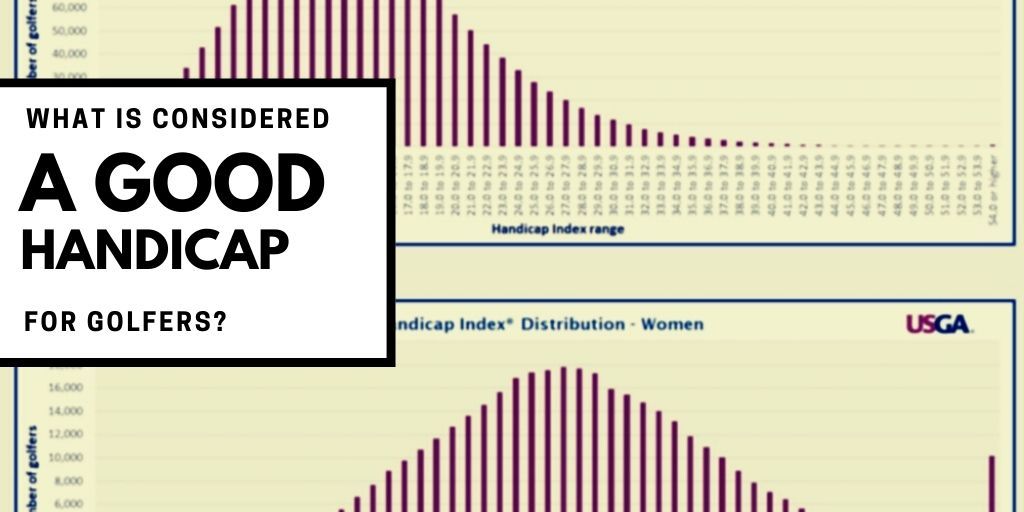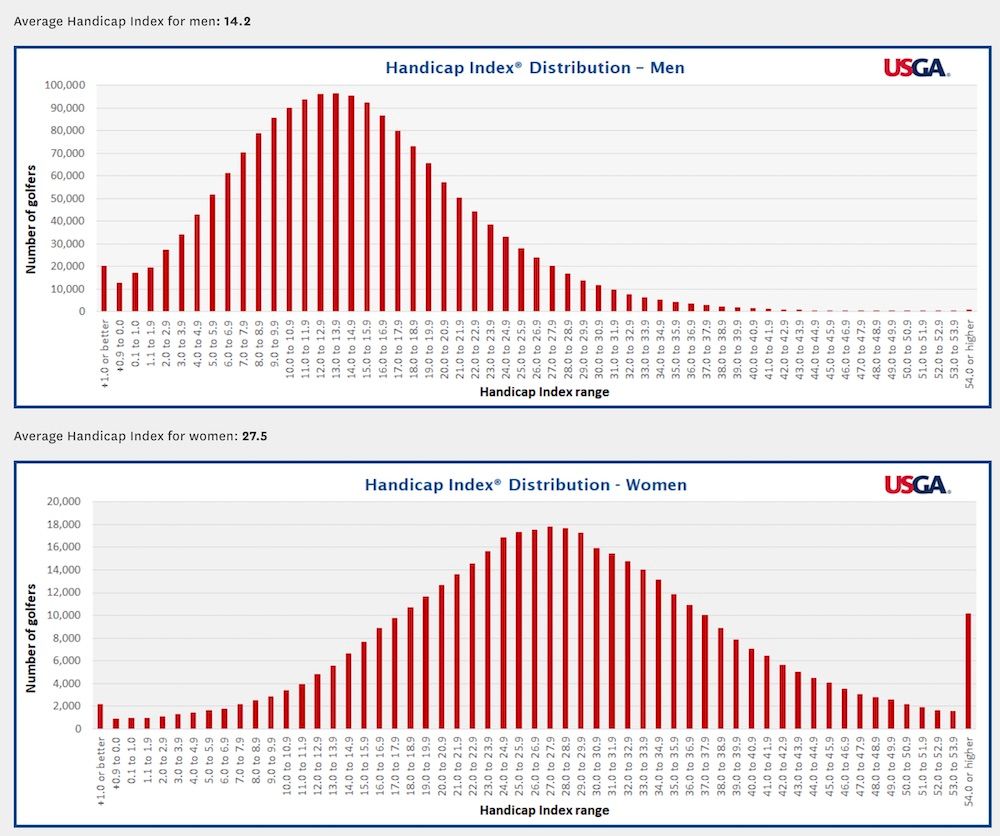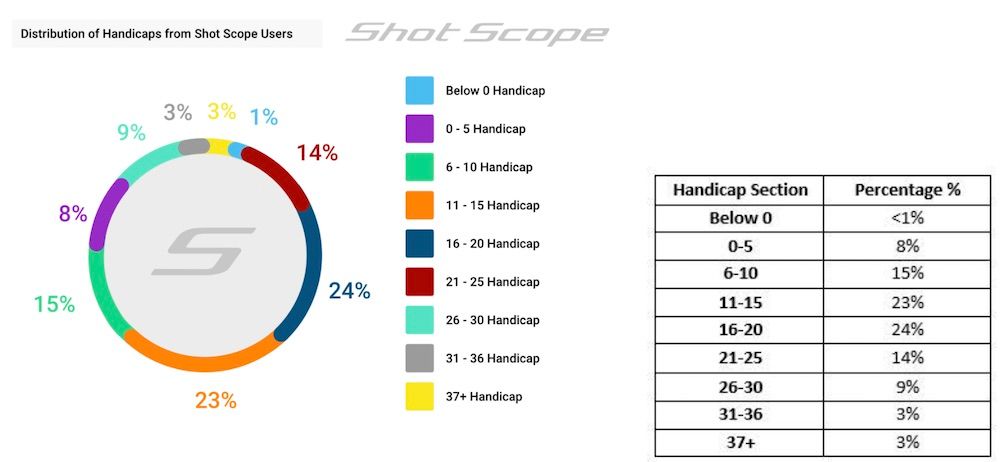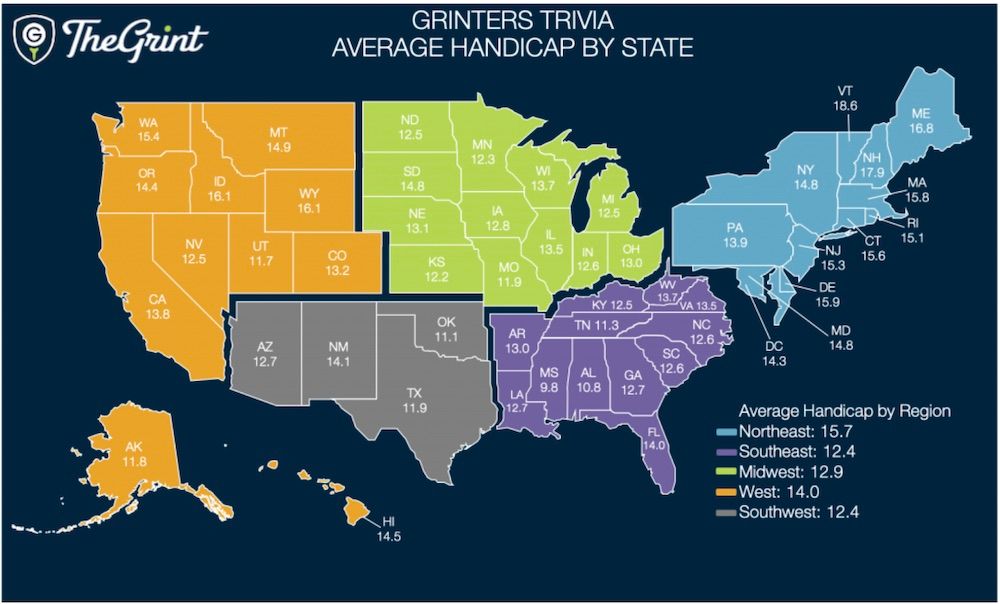
Golf is a relative game, but still a competitive one. Whether it is prestigious tournaments, local club matches, or just competing with how you played last month, golfers are always looking for a way to measure themselves against other golfers. For many, a handicap provides this measurement. Which begs the question - what is a good handicap?
I think the answer goes beyond just a number, so here we'll take a look at what a handicap is and add some context to create a better answer.
Golf Handicap Explained
While commonly called a handicap, the USGA's official terminology is a "Handicap Index." The purpose of the handicap index is to give a measure of player ability relative to par. One of the unique things about golf compared to other sports is that the handicapping system allows golfers of different ability levels to compete against each other fairly.
It's a fantastic thing if you think about it; after all, even if I'm given 20 points in a game of one-on-one basketball with LeBron James, I'm still going to lose. Give me 20 handicap strokes in a match with Tiger Woods, though? I might be competitive, making it a challenge for both of us. (author's note: If you're reading this Tiger, that's an open invitation)
If you're looking for ways to keep an official handicap index, check out this guide.
Handicap Is Not Your Average Score
A player's handicap index is different from their average score. Instead, the handicap index looks at recent scores and adjusts based on the course's difficulty, expressed in the course rating and slope, two numbers that appear somewhere on the scorecard. Rating and slope are judged by a review committee, which determines what a 0 handicap index "scratch golfer" would usually score on the course and assign that as the rating. The USGA Slope Rating is a numerical value that indicates the relative difficulty of a set of tees on a golf course for a bogey golfer compared to a scratch golfer.
So score performance along with course difficulty goes into generating the handicap index. Instead, it is better to think of the handicap index number as what you can reasonably expect to score on a good day. Especially for golfers who play frequently and post many scores, what they shoot for a given round can be significantly higher than their handicap index.
Now that we've explained a bit about golf handicaps in general, let's get back to the main question, what is a good golf handicap?
Percentage of Golfers by Handicap
The most straightforward answer to what a good handicap is might be found by merely looking at the percent of golfers by handicap. Fortunately, the USGA gives this data for all golfers with official handicap indexes. Also, multiple shot-tracking companies are now sharing this data publicly, which offers a good opportunity to capture an audience that might not have an official USGA handicap.
USGA Handicap Trends
So, if we want to define a "good handicap" based just on having a lower handicap index than most other golfers with indexes, we answer a handicap lower than 14 for men and less than 28 for women. Here are handicap distributions for men and women in the United States:

However, this answer gets more complicated if we try to use a "good handicap" synonymous with a "better than average" golfer. Only around 2 million of the estimated 24 million-plus golf participants carry a handicap index. It's reasonable to assume that players who do have an official index are both more avid and perhaps more skilled on the whole than golfers who don't. Fortunately, modern technology has given us more data on the question as many golfers are using apps to keep their scores and statistics outside of official indexes.
Shot Scope Handicap Data
Here is what the distribution of handicaps looks like for Shot Scope users:

With a strong plurality of users in the 11-15 and 16-20 ranges, we wind up with a very similar distribution compared to the official USGA index statistics.
The Grint Data
This theme remains consistent if we look at the current handicap range for users of theGrint:

In this case, the average handicap across users was 14.5, similar to the USGA information and just lower than Shot Scope. Another interesting data point we can pull from theGrint that's not available from the USGA is a breakdown of handicap by region:

Outside of a few strange outliers, we can see a general trend in this information. Golfers in year-round golfing climates tend to have lower handicaps than short-season counterparts. So a good handicap in Maine might not be the same as a good handicap in California.
Additionally, even as we increase the amount of handicap data, we still cannot equate a "good handicap" to a "good golfer" as the vast majority of golfers won't be using services like these. At this point, I think we have to add to the question. Instead of just asking, "What's a good handicap?" we should be asking, "What's a good handicap for an avid golfer?"
Even that question is missing a critical variable, so let's look at that next.
Average Handicap by Age
One outlier in the average handicap by region data above that caught my eye was Florida. Florida is world-renowned for golf and a year-round golf destination, so why is the average handicap higher than fellow Southeast region-mates like Georgia? A possible explanation might be that the average golfer in Florida is significantly older than other regions given the high number of golfing retirees in the state. So how does age impact the average handicap? Unfortunately, the USGA doesn't publish official handicap index statistics by age, but we can get some data from theGrint once again:

While I would question if the average 19-year-old is really a single-digit handicap (we’ll have to save vanity handicaps and sandbagging for another article), I believe the trend lines tell us an understandable story. Junior golfers who haven’t fully matured yet have higher handicaps on average than adult golfers aged 20-50. As we get older and the physical ability to play golf diminishes the average handicap increases. Now, instead of asking, “what’s a good handicap?” we probably need to ask, “what’s a good handicap for an avid golfer my age in the region that I live?” That’s not a question that most golf websites will have an easy answer for, but if you really want to know, then some of the data sources above should at least give you an idea if you really dig into them.
Still, I think the real question we are trying to ask with “what’s a good handicap” isn’t about the handicap index at all. Instead, we’re trying to figure out if we’re a “good golfer.” That is something I think we can give a clearer answer to.
Breaking 90
It might just be my opinion, but I firmly believe that if you consistently break 90, then you have earned the right to call yourself a good golfer. The majority of golfers will never accomplish this, so even if the average USGA official handicap index is carrying male golfer scores a few strokes better than this on a good day, it is still a significant accomplishment to shoot 89 or lower.
For those of you who frequently break 90 already, congratulations! However, if you are always seeking to break 90 (or break 100 for that matter), I want to give you some good news. It is also my firm opinion that any golfer (playing the correct set of tees at a regulation course of appropriate difficulty) can break 90 through practice and proper course management. The Practical Golf Archives would be a great place to start as the site is filled with information that can help you achieve this goal. You can also find great additional resources among other readers in the Practical Golf Forums, a community dedicated to helping everyone enjoy and play "good golf" regardless of what their handicap index card says.
We care about the protection of your data Read our Privacy Policy